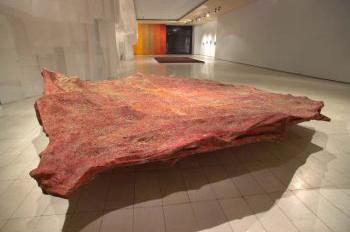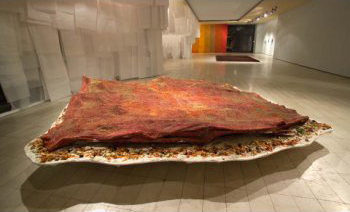φ21°33', λ41°21'
Ecology Information No. 4
August, 2007 |
| 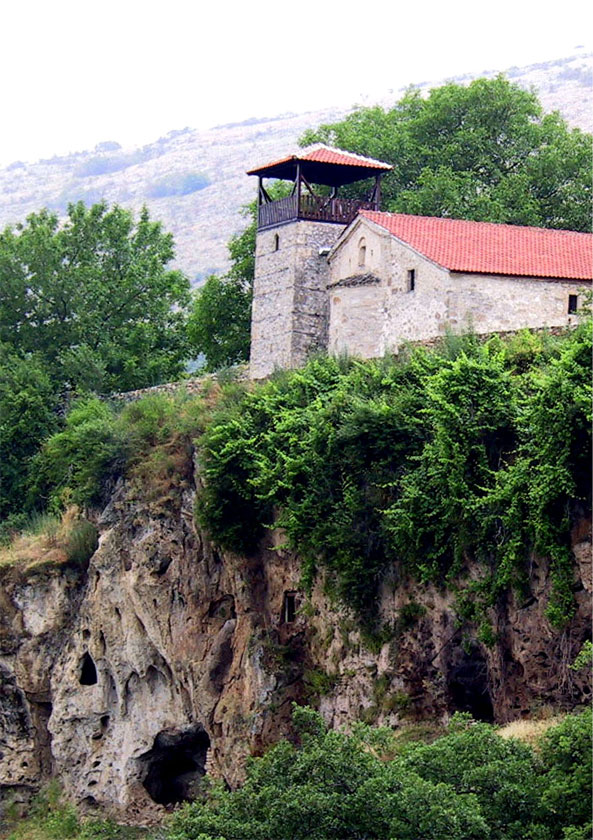 | 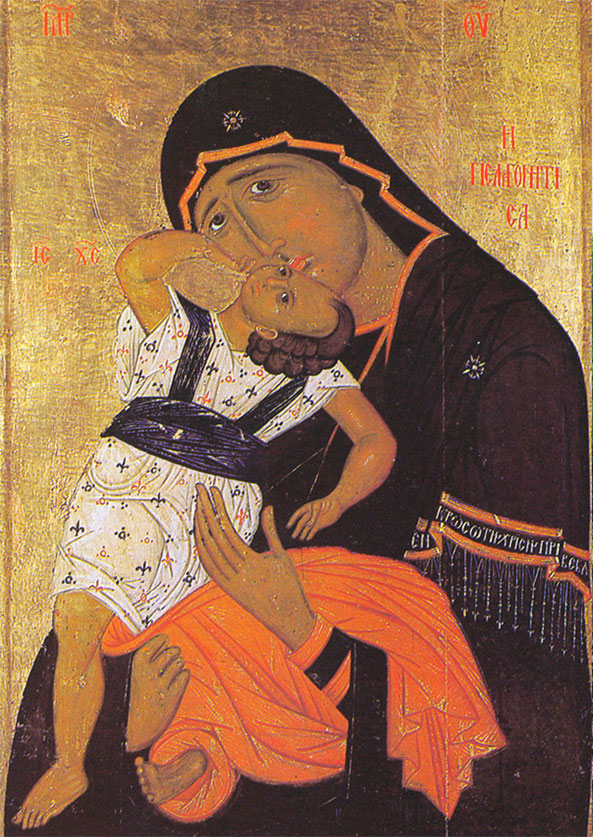 |
ARCHAEOLOGICAL HERITAGE OF PRILEP
The past, the present and the future are three segments of human existence which trace their way through the space and time. They are all closely connected and each of them, with its individual value, defines their courses of development. Relics in a form of mobile and immobile archaeological material are the basis from which the culture of life of the people in certain areas can be determined. Following the archaeological traces in Prilep and its surrounding, continuous forms of life from the prehistoric period until today can be observed, with the oldest traces dating back to the neolith. Remnants of the antic period, supported by the knowledge acquired from written sources, confirm the existence of greater number of settlements which in various conditions and temporal distances enabled life and communication between the North and South and the South and West. This is particularly evident in the period of Roman rule, when the important regional route passed through this area, connecting two main roads of the Balkans: Via Militaris (Singidunum - Constantinopolis) and Via Egnatia (Durachium - Amphipolis). The ancient towns Alcomena near the village of Buchin , Brianion in v. Graiste, Kolobaisa in the close vicinity of Treskavec monastery, Ceramia near Prilep, Stibera near v. Cepigovo, etc., confirmed the existence of organized social life in the northern part of Pelagonia, near the river Crna and its influents. Investigations of the remains of the ancient town Stibera, important cultural and economic center from the 3rd century BC to the 3rd century AD, just proved the relevance of the region in that period. These remains are also very helpful for following the migration processes connected with military campaigns of the Roman Empire. Remains of military camp (castrum) at the locality Gradiste near v. Debreste, which protected the Barbaras passage and prevented the invasion of enemy raids from the north, are the most imoprtant material proof of the importance of this fortress in the Late Roman Period. Excavations in this locality also revealed remains of cultural strata from the prehistoric, Hellenic, Roman and Medieval period. Having no intention to minimize the importance of previously mentioned or unmentioned archaeological points, it can be stated that the main landmark of Prilep is King Marko’s Castle, by which it is recognizable wider in the Balkans. This segment of material culture provides testimony to the existence of larger settlement with fortified acropolis, which played significant role in the development of Macedonian Medieval State. Prilep was one of the towns which served as a shelter to Tsar Samoil through the difficult and crucial days after the battle with Byzantium in 1014. The fortress and its walls suffered many changes over the time, taking their present shape by the end of 13th and beginning of the 14th century. In the slopes of King Marko’s Towers and at their foot, there are traces of settlements, especially from the Medieval Ages; there, among granite rocks, stands a carved throne - the most remarkable monument of the Early Medieval history of Slavic population, the social and political center of the settlment. The valuable archaeological heritage from the past is our base for the present and visa for the future. Unfortunately, modern world is losing its sense for permanent preservation and protection of its sources of material culture. Obsessed by the competition for profit and for possession of material goods, it is irreversibly losing important elements of its history, destroying the efforts of the authorized institutions responsible for protection, preservation and presentation of cultural values from this region. Such an attitude leads to permanent loss of material artefacts that are necessary for scientific interpretation of history; it undermines the foundations of our presence, and the visa for our future will remain just an unrealized dream. Liljana Kepeska, archaeologist,
curator counsellor, Institute and Museum - Prilep |
 Photography,
Monastiry St Preobrazdenie, Zrze,
From the archive, Museum of Prilep 
From the archive,
Museum of Prilep | | 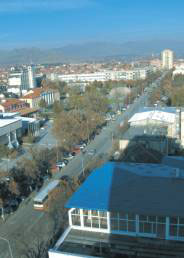
photograpy:
Petre Nikoloski, 2006 |
Gallery of Icons In the scope of the Institute for protection of cultural monuments and Museum in Prilep, there is Gallery of icons, one of the most beautiful galleries in Macedonia . It is situated in the first Women's school, an object built in the second half of 19th century by wealthier craftsmen from Prilep. Prilep has a long tradition in icon painting. Icon masters painted enormous number of icons in the hundreds of churches and monasteries in the town and in surrounding villages. The Institute and Museum owns a collection of over 200 hundreds icons chronologically arranged from the 15th to the 19th century. The basic part of the Gallery collection consists of some more significant and valuable icons, enriched with a number of icons loaned from the Prilep Eparchy of Macedonian Orthodox Church. In the four corners of the Gallery there is equal number of showcases with various archaeological, bibliographical and ethnological exhibits related to some religious customs, which make this place an exceptional art unit. Chronologically, the Gallery starts with the fresco of Archangel Gabriel (first half of the 12th century), found during archaeological excavations in the monastery church of St Archangel Michael in Varos, a settlement of Prilep. Actually, it starts with the icon the Mother of God with Christ (15th c.) and continues chronologically with icons dating from 16th, 17th, 18th and 19th century. Some of the more important icons in the Gallery are: - Mother of God with Christ, made out of impregnated linen
- The Triptychon, where the Mother of God is presented as a Byzantine czarina with crown made of gold, pearls, precious stones, etc.
- Sv. Gjorgji Poloski (St George of Polog), made in 1630, atypically presented as nobleman sat on a throne,
- Presentation of the Mother of God at the Temple
- The central Deesis from the church of Sv. Nikola (St. Nicholas) from Zrze, with the apostles standing left and right of the Deesis. It was made in 1535 by hieromonk Jovan (John) the zographer. The work is considered masterpiece of icon painting in the Postbyzantine period.In one of the showcases with archaeological exhibits there is a rim of a large pot (pythos), dated 4-5th c. A.D., with a cross impressed on it. It proves that Christianity was made the official state religion in Macedonia very early under Roman rule. There are also icons from the 18th c., depicting Jesus Christ holding a sphere and scenes of the Creation of the World. Other icons in the Gallery are arranged in the following order:
- Icons dating from the 19th c., painted by Adamce Zograph, the well-known master who made large number of icons in Prilep and the area around.
- Some festive icons depicting scenes from the life of Jesus Christ, which also attract great attention.
- Throne icons painted by Konstantinovi, a guild from Krusevo, depicting fifteen scenes from the life of Jesus Christ, also including icons of the holy apostles Peter and Paul, St Elias, St Demetrius, etc.
- A number of icons made by the icon painter from Prilep Jovan Atanasov-Prilepcanin, who learned his handicraft from the famous master Adamce the Zographer. He is known for his holy Virgins with rich coloration and excellent perspective, where he achieved perfection in icon- painting.
- The Gallery ends with the so called Jerusalem linen cloth, made on impregnated canvas, depicting scenes from the Creation of World, Adam and Eve, Noe's Ark and the Mother of God with Christ. The midpoint scene is The Second Coming of Jesus Christ, but this time as Judge of the world. Beside artistic value, the Gallery is also important for its educational activity among the population, particularly pupils, who become acquainted not only with icon painting but also with Christianity as a fundamental value of human existence. The Monastery of Holy Transfiguration, known among the population as St Saviour, lies on a rocky hill above the village of Zrze . The monastery church was built in the second half of the 14th century and is distinguished by its brilliant architecture and icon painting. Its maecenas were Byzantian kings and noble families from the period of Paleologs dynasty. The legend says that Macedonian king Volkasin was crowned in this church. One of the most beautiful icons from Macedonia is the Holy Mother Pelagonitisa, from the church of the Monastery in Zrze . It is made on a wooden board by hieromonk Makarios the zographer. It has been exhibited in many famous galleries worldwide (Rome, Paris , New York etc. ) and is considered a masterpiece of icon painting from the end of the Byzantine period. Ilija Velkoski, senior curator in art history 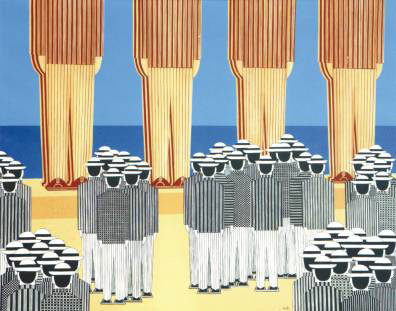
photography: Janis Gaitis, 1997,
titled "Bosses" from the collection of Artist in Residence
Dr Bosko Babic and his Legacy
It is impossible in a short text to say everything about the man who spent his whole life in continuous creation of future, enlightening in the same time the past and proving the identity of Macedonian nation. His mother Maria was of Romanian origin and she probably never supposed that her son would dedicate his life to Prilep, a town she had never heard of before. His life story was determined with his first coming in Prilep, in 1954. His fascination with King Marko’s Castle and all other attractions that Prilep offered as a field for cultural and scientific work was decisive point which bounded his own future and the future of his family to Prilep. He was the founder of the National Museum, where he started his working age. In the scope of the Museum he also established the Center for investigation of old Slavic Culture, which in 1980 became an Institute, to which he was director until his retirement. He was director of the Center for contemporary art, which in 1980 was also established as an independent institution and Dr Babic obtained a lifelong title Honorable president. His creativity does not end here. He helped the foundation and development of many other cultural institutions in Prilep, in Macedonia and much wider. He departed from this world into history in 1998, but his spirit lives in everything he created. Nine years after his death, Prilep celebrates a rare jubilee: 50th anniversary of the Center for contemporary art. These are years filled with creation, resulting in a huge collection of art works from the workshops organized in the scope of the Center: International fine art colony, International sculpture symposium “Marble-Mermer”, International studio for plastic in wood, Atelier for ceramics, stained glass, graphics and art photography. All the events were regularly attended by art critics and always highly appraised by them. This jubilee will be a nice occasion for the citizens of Prilep and Macedonia to enjoy the exhibitions and we’ll do our best to show as many works of art created in the Center in the last 50 years as possible. This will be followed by rich programme and organization of discussion panels on many phenomena related to fine arts. Gordana Babic-Janeska, Art historian |
 Bogorodica Pelagonitisa, icon,
Jeromonah zograf Makarie, 1422, Monastery St Preobrazdenie, Zrze | |



